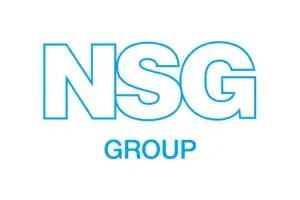
NSG Group Leverages eMaint to Support Global Maintenance Excellence and Gain Competitive Edge
Customer Since: 2015 | Industry: Manufacturing
NSG Group supplies glass for architectural, automotive and technical applications, and operates in 28 countries. NSG Group’s functional team was searching for a CMMS solution to replace the functionality of MP2 with SAP interfacing capability. With eMaint CMMS, NSG Group established an standardized asset hierarchy for over 10,000 assets, gained support for capital planning and more.
BACKGROUND
Nippon Sheet Glass (NSG) Group is one of the world’s leading manufacturers of glass and glazing systems. The company supplies glass for architectural, automotive and technical applications, and operates in 28 countries, with business divided into four regions: North America, South America, Europe and Asia. Glenn Shanahan, the North American Excellence Manager in Maintenance, is a member of NSG Group’s team of functional experts, focusing on automotive glass production.
THE CHALLENGE
In early 2015, NSG Group’s CMMS usage was scattered: some locations utilized MP2, some were former MP2 users with a non-functional solution, while others had maintenance solutions that were spreadsheet-based. NSG Group’s functional team of experts were searching for a CMMS solution to replace the functionality of MP2, as well as a web-based solution with SAP interfacing capability, online training, live chat support, and automatic updates. eMaint met the company’s requirements and included the ability to exchange best practices with other large companies at annual events.
IMPLEMENTATION
Seven plants across NGS Group’s North American operations use eMaint. To begin the implementation process, Glenn’s team mapped out operations with the greatest needs, and prioritized implementation for locations with failing systems. Glenn reports that the key to quick and successful implementation is an understanding of what a CMMS can do, and a positive buy-in from management. These factors can mean the difference between a 30-day and a nine-month implementation process.
RESULTS
All of NSG Group’s 10,000 assets are structured within an asset hierarchy. After using a financial model to establish their hierarchical structure, Glenn set up a template to standardize across all locations to effectively look at performance and analyze key metrics, including uptime and downtime. Completion rates for preventive maintenance are an NSG Group leading metric because of how it can impact operations. If a piece of critical equipment goes down, it has the ability to close the entire plant, and impact NSG Group’s promise of quality and on-time delivery.
Prior to eMaint, much of NSG Group’s metric insight was based on tribal knowledge. Today, metrics are recorded and tracked on a daily basis in eMaint. Glenn’s team also developed a Metrics Center tab on their Dashboard, which offers live data on PM completion rates per Master Asset (Production Line) asset.
At the beginning of each month, Glenn utilizes the eMaint system to report on Maintenance Operational metrics including PM completion rates and Technical Downtime performance at each plant. These reports show how each plant stacks up against the rest based on critical performance benchmarks, motivate employees to focus on key metrics, and help to increase efficiency across the board.
NSG Group also utilizes eMaint to support capital planning. If the company is “hurting” in a certain area on a piece of equipment, for example if it is costing too much, they utilize eMaint data to analyze the cost of repairs vs. replacement cost.
